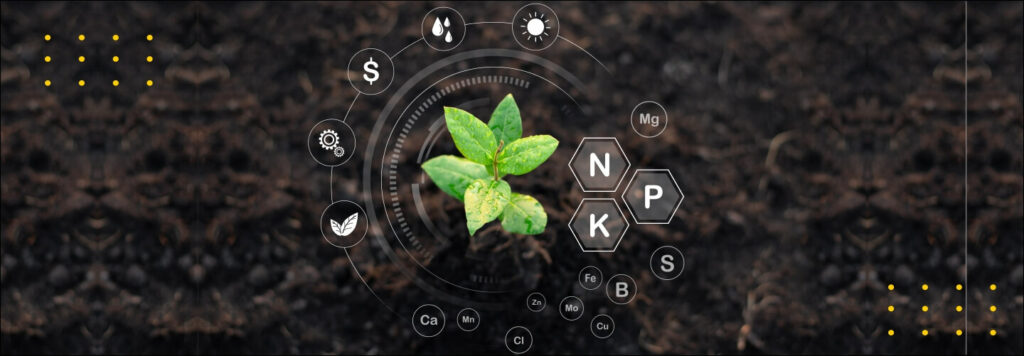Precision Farming: A Much-needed Revolution for Agriculture’s Future

Imagine a world in which robotic farmers pay individual attention to each plant and animal raised for food, supplying the exact amount of water and nutrients required at the right stage of growth.
For decades, farmers have been gambling on external factors such as weather, rainfall patterns, and soil properties to determine a good yield. Now, machinery fitted with GPS technology drives along the farms to measure the application of fertilizers; harvest machines are equipped with computers to gauge yield and collect thousands of data points for better analysis. The gap between farming and science is thus reducing with the help of precision farming, which provides accurate data to make agriculture more productive and profitable.
The Rise of Precision Farming and Race for Food Resilience
The agriculture industry has undergone a series of revolutions that have driven efficiency, yield, and profitability to levels previously unattainable. With the progression of agricultural history, scientific knowledge, and mechanical expertise in the 1900s, farmers used machinery to reduce their manual labor, chemicals to nurture and protect the crops, and big production methods to significantly increase the yield.
However, climate change, an ever-increasing population, and the recent COVID-19 outbreak have catapulted the challenges surrounding food resilience and have brought the vulnerability of global food production into the limelight. In response to those ongoing challenges, another food production revolution has been underway – precision farming.
Today, farmers across the world are starting to adopt precision farming systems as it mainly helps them to accurately apply fertilizers and pesticides in places where they would inadvertently either miss out or apply twice earlier. Consequently, a tremendous amount of progress and technology adoption has been observed in this space.
Cutting-edge Technology Used in Precision Farming
By using precision farming, farmers hope to produce more using fewer resources. In turn, many technology-enabled tools and systems that keep track of crops, measuring their performance and exact needs are entering the precision farming market. This leads to the efficient use of water and fertilizers.
- Location Monitoring Tools – Global positioning system (GPS) satellites and machinery equipped with GPS, as well as autonomous farm equipment, are primary tools for precision farming, which collect data to estimate the water in the soil, crop biomass, and other metrics. Variable rate of technology is another part of GPS in agriculture that allows farmers to apply fertilizers at different levels of requirement throughout the field.
- IoT–based Sensors and Software – Internet of Agricultural Things (IoAT) is recently gathering a lot of buzz in precision agriculture. IoAT sensors can be placed in farming equipment, machinery, and even plants to get a 360-degree view of the health of crops and trigger necessary actions. IoAT-driven system allows controlling the sensors and dozens of equipment units simultaneously for efficient farm management.
- Drones and Robots – These technologies are another new area that farm media have touted as the solution to data collection for large-scale agriculture, crop scouting, and management of food production. The use of drones and robots can also be used to analyze field conditions and consequently to use fertilizers, nutrients, and pesticides in apt quantities where crops most need them.
How Does Precision Agriculture Help Farmers?
With the advancements in technologies and rapid digital transformation, it is clear that several farming machines and tools are in place to revolutionize the existing agricultural practices. But what exactly is the most important requirement that these tools and precision farming can help meet? The need to ramp up food production while putting agriculture back on a sustainable path.
1. Provides More Metrics to Monitor Farming
Digital tools such as sensors and GPS in agriculture primarily help gather farming data such as historical, predictive monitoring, and environmental insights to choose crops with a higher yield. Farmers will then be able to monitor various metrics including rainfall levels, and nutrients required by the crops to grow up to their peak level while using fertilizer as inputs, soil samples, etc.
2. Aids Farmers in Decision-making
According to several studies, farmers need to know three things: conditions that are relatively stable in the growing season, conditions that change, and conditions that make the crop thrive. Based on real-time data collected by drones and sensors, farmers can re-adjust their practices. The ability to view how the farmers are performing on a large scale helps in making farm practices more precise and strategic.
3. Makes the Invisible, Visible
Precision farming equipment and machinery gather a wide range of information that identifies moist, eroded, or low-performing areas in the field. Based on this insight, farmers can take action to either increase or decrease inputs to the field. After crop plantation, farmers can measure soil quality, pesticide application, fertilization and irrigation rate, and overall crop health through remote sensors. These tools make it easier to quickly identify and apply inputs to areas that require improvement, thus saving time and increasing the yield.
4. Enables Forecasting of Harvesting Yields
With continuous collection and analysis of data from the farm during the entire season, precision farming can produce more accurate projections for harvest yields. Such information allows farmers to predict and determine the risks of natural conditions, plan better and carry out climate-smart agriculture to maximize revenue opportunities in the future.
Precision Farming: Mapping the Road Ahead to Sustainability
Today, the challenge of producing more food sustainably has arrived because our planet is dealing with a serious climate change crisis. Chemical pollution, over-fertilization and erosion have led the farming land to degradation. On the other hand, global weather patterns are becoming more extreme and there is an overwhelming consensus that global warming is occurring at an unprecedented rate. Farming is also one of the key contributors to these conditions.
Digitalization in agriculture and big data enables more precise planning and understanding of key needs in the field. Important environmental benefits of precision farming include:
- Higher yields through increased efficiency in farm management
- Reduction in the use of fertilizers and pesticides through accurate application
- Fuel savings in farm equipment due to less overlap and better monitoring
- Resource savings such as water through more precise identification & observations of needs
Overall, precision agriculture has the potential to help make crop production more efficient and better for the environment at a time when there are billions of mouths to feed on earth. FarmERP specializes in meeting the needs for precision farming and helps agribusinesses to achieve their sustainability goals. Contact us to know how we can help your agribusiness drive higher profits by carrying out precision farming.
